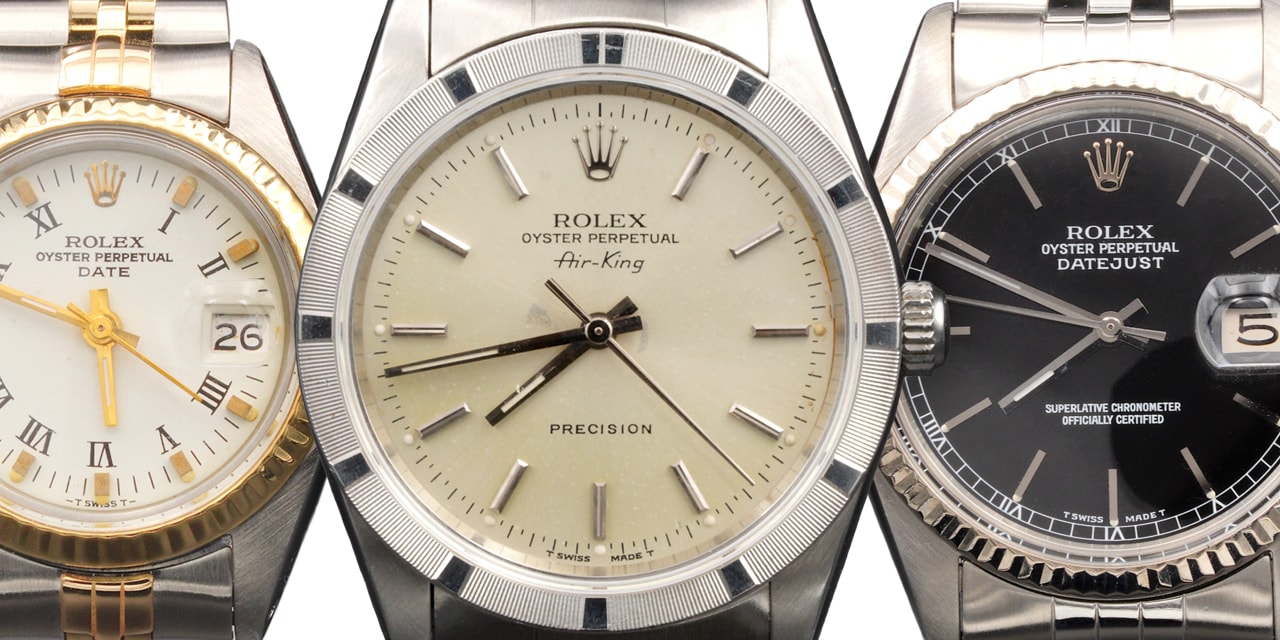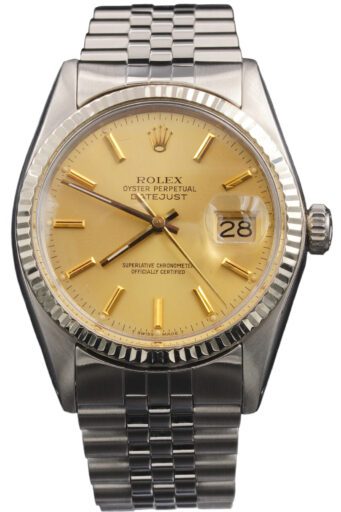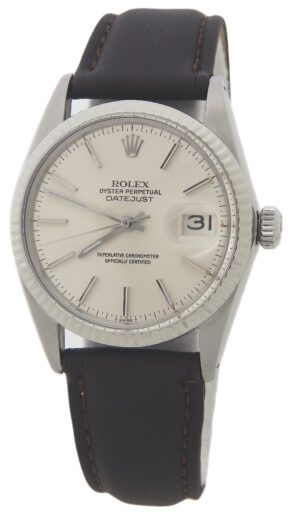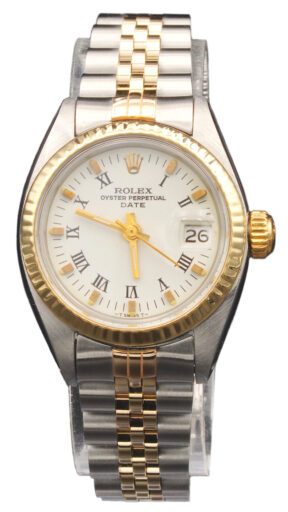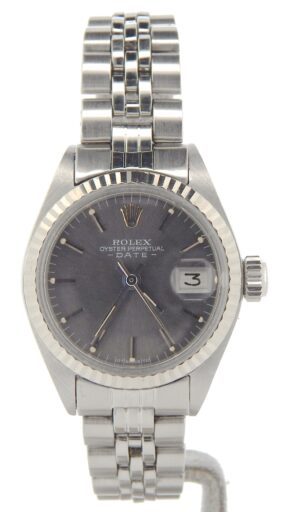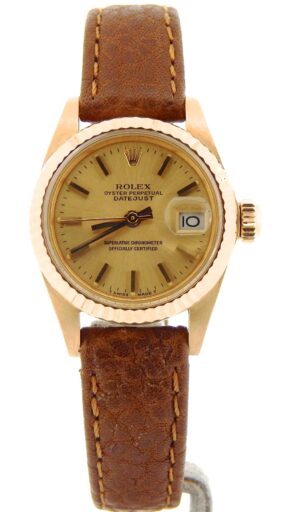The BeckerTime Guide to some of the Best Preowned Rolex Watches Under $5,000
We have published a number of blog posts recently highlighting exactly what kind of Rolex watch you can buy across a variety of price points. All of these different value scales contain outstanding models, as you would expect from the world’s most successful luxury watchmaker. But throughout the series we have tried to expel the biggest misconception most people hold about the company; that is, that their watches are expensive.
I can explain. Obviously, you can pay an incredible amount of money for a Rolex watch. However, almost uniquely in the luxury goods industry, that watch is likely to at least hold its value, especially if you buy it preowned. If you make an informed choice of purchase, it is possible that watch will even be worth more than you paid for it in a few years’ time. So can they really be described as expensive?
The $1,000 to $5,000 Spread
All that being said, some of the manufacture’s models don’t require a substantial upfront payment at all.
Several of the brand’s true vintage icons can be had for less than $5,000. And you are not limited, as you might imagine, strictly to the steel selection. You will find plenty of Rolesor and even full gold watches within that budget.
Below, we have picked out three of our favorites.
If You Want a Watch Fit For a Warrior
The Rolex Air-King ref. 14010
Released in 1945, the Air-King was Rolex founder, Hans Wilsdorf’s commemoration piece to the heroes of the RAF following their successful defeat of the formidable German Luftwaffe over the skies of England.
Wilsdorf made no secret of his love for Britain, even during the darkest days of WWII when his home nation of Switzerland was hemmed in on all sides by Nazi-occupied countries. Reciprocally, Royal Air Force pilots had long taken to buying Rolex Oyster watches out of their own pockets to replace their standard-issue models, preferring them for their larger and more easily read displays as well as their robustness.
The Air-King was the last in a line of ‘Air’ watches from the brand, along with the Air-Lion, Air-Tiger and Air-Giant, and it has remained a near-constant presence ever since, with only a brief sabbatical from 2014 to 2016. Today, it is second only to the Datejust in longevity.
Yet, it has always been one of the unsung creations in the line-up, lacking the devout following commanded by the likes of the Submariner or Daytona. As a result, there are not as many different generations of the watch as you might expect for something which has been around for the best part of eight decades.
Much of that is due to one reference, the ref. 5500, staying in production for an incredible 32-years. Launched in 1957 and not replaced until 1989, it stands as possibly the longest-running single reference in Rolex’s history.
By comparison, the iteration which replaced the ref. 5500 served a relatively short 11-year tenure. The ref. 140XX offered a range of welcome upgrades on its predecessor, including a sapphire crystal and a much-needed advancement in movement with the Cal. 3000. But many elements stayed the same too. The Air-King remained a simple, time-only watch and, with a diameter of just 34mm, an unusually modest one as well. Dials were limited, with the classic black or white options joined by a deep blue and a silver, with salmon perhaps the most acclaimed choice.
But there was one other difference which separates this most humble of watches from any available in the current portfolio. The ref. 14000 came with the standard and time-honored domed bezel, whereas the ref. 14010 was fitted with an engine-turned surround. A halfway point between the plainness of the smooth finish and the flashiness of the fluted, engine-turned bezels feature a series of decorative grooves etched into the surface, lifting the watch and catching the eye, but in a more subtle way. Sadly, it is no longer offered by Rolex and is something missed by many purists.
It might be hard to believe that you can secure one of these wonderful watches, complete with a heritage that stretches back to the Second World War, for less than $5,000, but it is extremely possible. As understated and minimalist as the crown gets, the Air-King offers are some of the best value for money in the industry.
If You Want the Quintessential Rolex
The Rolex Datejust ref. 16014
Rolex released their ground-breaking Datejust in the same year as the Air-King but, unlike that model, it is a watch that has never gone out of production.
A revolution in its day, it was the first waterproof, self-winding wristwatch to feature a date display and is still the bestselling piece of all in Rolex’s canon.
Nowadays it is available in four different sizes, including the Lady-Datejust, five different metals, with a choice of four bezels and three bracelets. Add to that an almost uncountable selection of dials and it could be called arguably the most adaptable watch ever made.
It is also completely chameleonic. No matter your temperament or style preference, there is a Datejust out there perfect for you. You might be the most outgoing party animal or a bookish wallflower—it is the one piece that has you covered.
But what will our $5,000 upper limit get us? Again, it might come as something of a surprise.
The ref. 160XX was the range which debuted in 1977 and lasted up until 1988. Even though that is a respectable amount of time for any iteration, the series is still described as transitional, meaning it both retained features from the previous generation while introducing new ones and, comparatively speaking, was not around all that long.
By the 1970s, the Datejust had long since had its outward visuals set in stone so then, as now, all the major improvements were internal. It would be the first example to have a hacking function, where pulling out the crown stopped the seconds hand to make setting the time that much easier, and it was also the first to have a Quickset date, meaning that the day of the month numeral in the watch’s three o’clock window could be set independently of the hour hand, again with just the winding crown.
The movement responsible for all that, the Cal 3035, was a fine mechanism. But with Rolex’s policy of never-ending tinkering and fine-tuning, they improved on it over the subsequent decade by adding a full balance bridge and larger balance wheel; both fairly minor upgrades which increased overall stability. The outcome was that the Cal. 3035 was usurped by the extremely long-term and widely used Cal. 3135, while in the real world there was very little to choose between them.
The ref. 16014 was a particularly popular variant of this classic Rolex. The age-old 36mm in diameter, it was cast in stainless steel and set with a solid white gold fluted bezel. While the two metals are similar in tone, when sitting together you can spot the gold’s warmer, more luxurious luster against the steel’s shine.
As always, there was a dial to suit every taste, but the silver-faced option worked especially well, leaving a bright, summery feel to the whole.
The bezel’s intricate patterns were matched perfectly by the elaborate, five-linked Jubilee bracelet, created specifically for the Datejust back in 1945. As well as being an attention-grabber, it is acknowledged as being the most comfortable of Rolex’s three metal bands.
To many, the Datejust is seen as the fundamental blueprint of what a watch should look like, the model every Rolex fan should own at some point in their collecting journey. That they are so accessibly priced is a wonderful bonus.
If You Want the Quintessential Women’s Rolex
The Rolex Lady-Datejust ref. 6917
As we already mentioned, Rolex watches for under $5,000 do not necessarily have to be steel. There are some within that price range cast in solid gold, and here we have a beautiful example.
The diminutive women’s version of the Datejust, the Lady-Datejust, has consistently outsold even the larger models since it premiered in the mid-1950s. Besides its much reduced dimensions, everything else about the lady’s piece is identical to the men’s; from the functionality to the variety in metals, dials and accessories.
The contemporary collection is sized at 28mm, already very small and elegant dimensions. But that is only since 2015. Before then, the Lady-Datejust was even smaller yet, measuring just 26mm.
The ref. 6917 was the most popular member of only the second generation of the watch, released in 1970 and running for around 13-years. That lands it squarely in vintage territory, and the model has a number of interesting retro touches.
Firstly is the reference number itself. Unlike today, where every metal Rolex uses has its own numerical identifier, in earlier times things were not quite so regimented. That means examples of the watch in either white, yellow or rose gold all carry the ref. 6917 designation, but so too do those in both yellow Rolesor and stainless steel with a white gold fluted bezel.
The iteration would also be the last to have a Plexiglass dial covering, a proper old school feature loved by many-a traditionalist.
But it had its fair share of modernizations as well. Rolex brought in the Cal. 1160 for this series, the first time the Lady-Datejust had had a movement ticking away at the now-standard 28,800vph. However, it was still lacking a Quickset date function but did manage to somehow pack in a 42-hour power reserve.
There were, of course, a plethora of different dials on offer. Everything from the old faithful monochromes, through traditional champagne (particularly on the yellow gold models) and up to some ultra colorful, Stella-like pinks, greens and oranges. Semiprecious stones also featured heavily, with mother-of-pearl, coral and lapis lazuli all massively popular.
In many ways, the Lady-Datejust is a more impressive achievement both aesthetically and on an engineering basis than the larger men’s watches. To be able to produce a model as faultless in terms of design and functionality on such a tiny scale, where tolerances are measured in the micron, is an astonishing feat. And to be able to acquire all of that for less than $5,000 is more incredible still.
Featured Photo: BeckerTime’s Archive.






